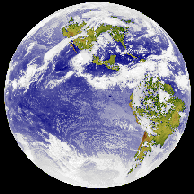Click on image for full size
Image from: Rick Kohrs, Space Science and Engineering Center, University of Wisconsin, Madison
Surface of the Earth
Most of the Earth's surface (70%) is covered with water, and the remaining 30% is taken up by the seven continental landmasses. However, underneath the water that fills the oceans, and the dirt and plants that cover the continents, the Earth's surface layer is made of rock. This outer layer formed a hard, rocky crust as lava at the surface cooled 4.5 billion years ago.
The crust is broken into many large plates that move slowly relative to each other. Mountain ranges form when two plates collide and their edges are forced up. In addition, many other surface features are the result of the moving plates. The plates move about one inch per year, so millions of years ago the continents and the oceans were in different positions. About 250 million years ago, most of the land was connected together, and over time has separated into seven continents.
You might also be interested in:

What types of instructional experiences help K-8 students learn science with understanding? What do science educators teachers, teacher leaders, science specialists, professional development staff, curriculum designers, school administrators need to know to create and support such experiences?
...more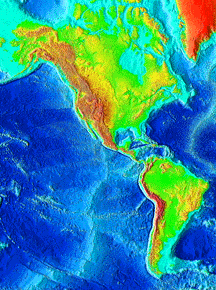
A planetary body, whether the body is a planet or a moon, has to cool off. The warmth contained inside a body controls what sort of surface activity, atmospheric activity, and interior activity which the
...more
This image of the surface of the Earth shows the North and South American continents, as well as the floor of the Pacific Ocean. As can be seen in the image, the ocean floor shows evidence of mid-ocean
...more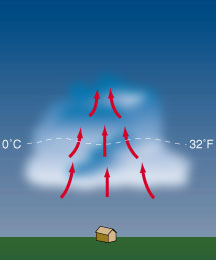
The sun heats the earth's surface during the day. The heat on the surface and warms the air around it. Since warm air is lighter than cool air, it starts to rise (known as an updraft). If the air is moist,
...more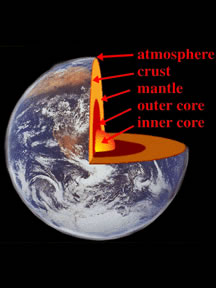
Earth has a diameter of about 12,756 km (7,972 mi). The Earth's interior consists of rock and metal. It is made up of four main layers: 1) the inner core: a solid metal core made up of nickel and iron
...more
The Earth's surface is composed of rigid plates that move relative to each other. The plates have three main motions, and each one has different results. 1) When two plates collide, one may be forced
...more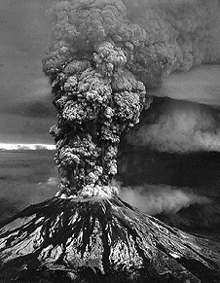
Volcanoes erupt when magma from deep below reaches the earth's surface. Once the magma reaches the surface, it is called lava and flows out onto the surface. Some really explosive volcanoes spew out lava
...more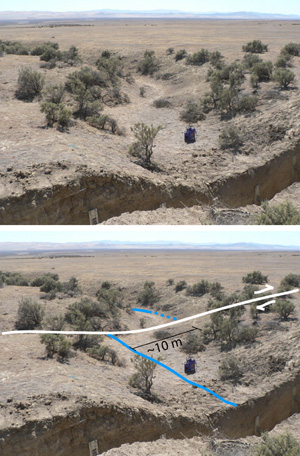
Scientists have taken a new look at part of the San Andreas Fault on the Carrizo Plain in Southern California. What they learned might change our understanding of faults and earthquakes. The Carrizo Plain
...more


